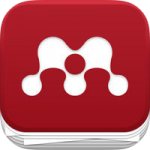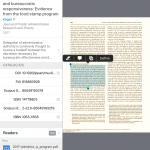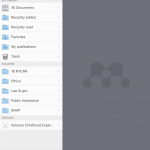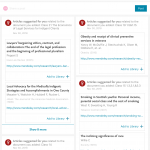The Mendeley app allows you to manage and share a wide variety of documents. Users can use it to develop a library of articles related to different research or practice areas. The app allows for tagging and mark up of documents so that they can easily be found later. Mendeley’s Feed allows users to find additional articles related to what is already in their library and connect to others with similar interests.
Version: 2.15.2 (iOS) 1.8.3 (Android)
Compatibility: Available on iOS and Android devices.
Price: Free
Target Audience: Professors, researchers, practitioners, and students
Bottom Line: The Mendeley app enables users to upload, save, access, share, and annotate research over a cloud-based file system.
Not a valid Json Element
Likes |
Dislikes |
|
|
Features and Options:
A user can access Mendeley over a variety of interfaces, using the Mendeley desktop software, web browser, and/or any IOS and Android device. While the most robust features appear only on the desktop software and web browser, such as the academic social network and the citation plugin, Mendeley IOS and Android apps still offer many useful features and options.
When the user opens the Mendeley app for the first time, they are asked to sign in or create an account. Once an account is created, the user can sign into his or her account on any other device and sync their work. Whenever the app is opened, the user’s library syncs to ensure documents saved from other devices are captured and included on the current device. To avoid exhausting a device’s storage, the Mendeley app only provides basic, summary information about a document. The user can opt to download the full text of the document from their library.
A user creates a library by finding documents online or uploading them directly from files on their device. Mendeley automatically inputs the title, author, DOI, abstract, and whatever other information it pulls from the research host or uploaded article. Once files are uploaded on Mendeley, users can search, highlight, and annotate and copy text directly from the pdfs to other apps.
To organize their library, users can create folders based on topic areas. Users can also tag and create custom notes for each document to make it easier to search for them later. Users can share files through email or other apps such as Trello, Microsoft apps, Endnote, and Skype.
The Mendeley app also offers a “Feed” and a “Suggest” feature. The Feed feature allows one to follow and connect with other users with similar research interests. The Suggest feature displays new items based on the documents a user has in their library. Both of these features help expose a user to new resources. While functional, these two app features are less robust than the equivalent features in the web-browser or desktop software.
Practice Implications:
Mendeley could be used by faculty to organize research or course material. It could also be introduced to students, through assignments or a tool listed on a syllabus, as a means to teach methods for completing efficient research. It could also be used in research methods courses to help students learn how to organize literature reviews. This app could also help researchers build a network around their field of interest. Practitioners could use Mendeley to develop a knowledge base around a particular area of practice.
Privacy Policy:
Data is shared with third parties. Mendeley’s privacy policy can be accessed here: https://www.elsevier.com/legal/privacy-policy






